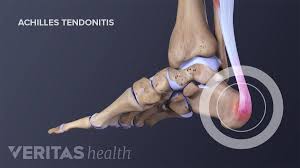All You Need to Know About Achilles Tendon Injuries

Introduction
The Achilles tendon, which connects the calf muscles to the heel bone, is the largest tendon in the human body and plays a crucial role in walking, running, and jumping. Injuries to this tendon are common, especially among athletes and active individuals. Understanding these injuries is important not only for prevention but also for effective treatment and rehabilitation, particularly as sports participation continues to increase across all ages.
What Causes Achilles Tendon Injuries?
A range of factors can contribute to Achilles tendon injuries, including overuse, improper footwear, and specific sports that demand high-impact movements, such as basketball or soccer. A study by the American Orthopaedic Foot & Ankle Society found that more than 25,000 tendon ruptures occur in the U.S. each year, with the risk significantly heightened in middle-aged individuals who return to sports after a lengthy hiatus.
Symptoms and Diagnosis
The symptoms of an Achilles tendon injury can vary based on the severity of the damage. Common indicators include pain along the back of the heel, swelling, and stiffness, particularly first thing in the morning or after periods of inactivity. In severe cases, a sudden sharp pain can indicate a tear or rupture. Healthcare professionals typically conduct a physical examination and may use imaging techniques such as ultrasound or MRI for a thorough evaluation.
Treatment Options
Most Achilles tendon injuries can be treated conservatively with rest, ice, compression, and elevation (RICE), along with physical therapy. Non-steroidal anti-inflammatory medications (NSAIDs) may also assist in relieving pain and inflammation. In cases where the tendon is ruptured or the injury severe, surgical intervention may be recommended to reattach the tendon to the heel bone, followed by a rehabilitation program designed to restore strength and flexibility.
Conclusion
Achilles tendon injuries can have a significant impact on an individual’s mobility and overall quality of life. Prevention strategies include proper training techniques, suitable footwear, and gradual increases in activity levels. With appropriate treatment and rehabilitation protocols, most people can recover fully from an Achilles tendon injury and return to their regular activities. Athletes, in particular, should be vigilant about their body’s signals to minimize the risk of such injuries and maintain peak performance.









